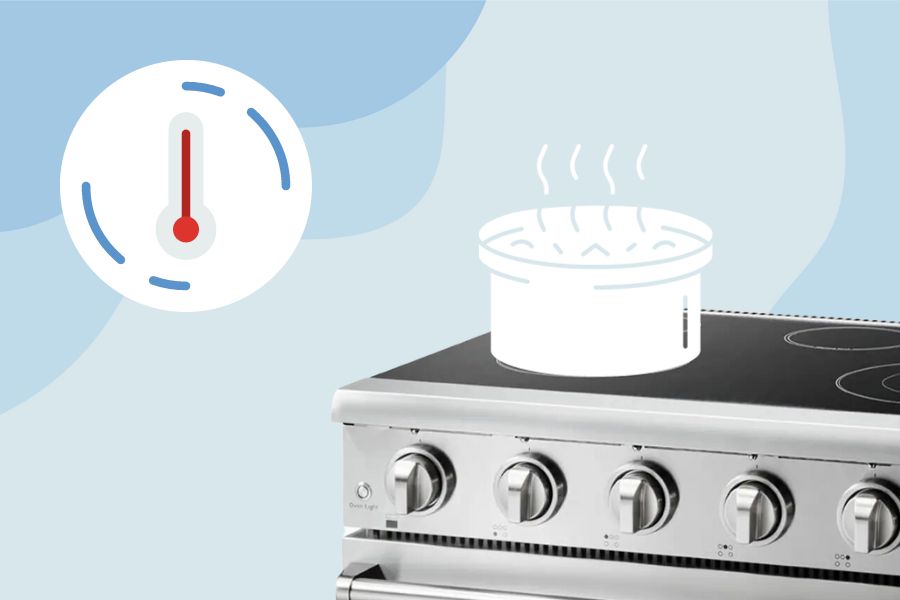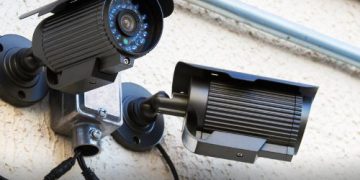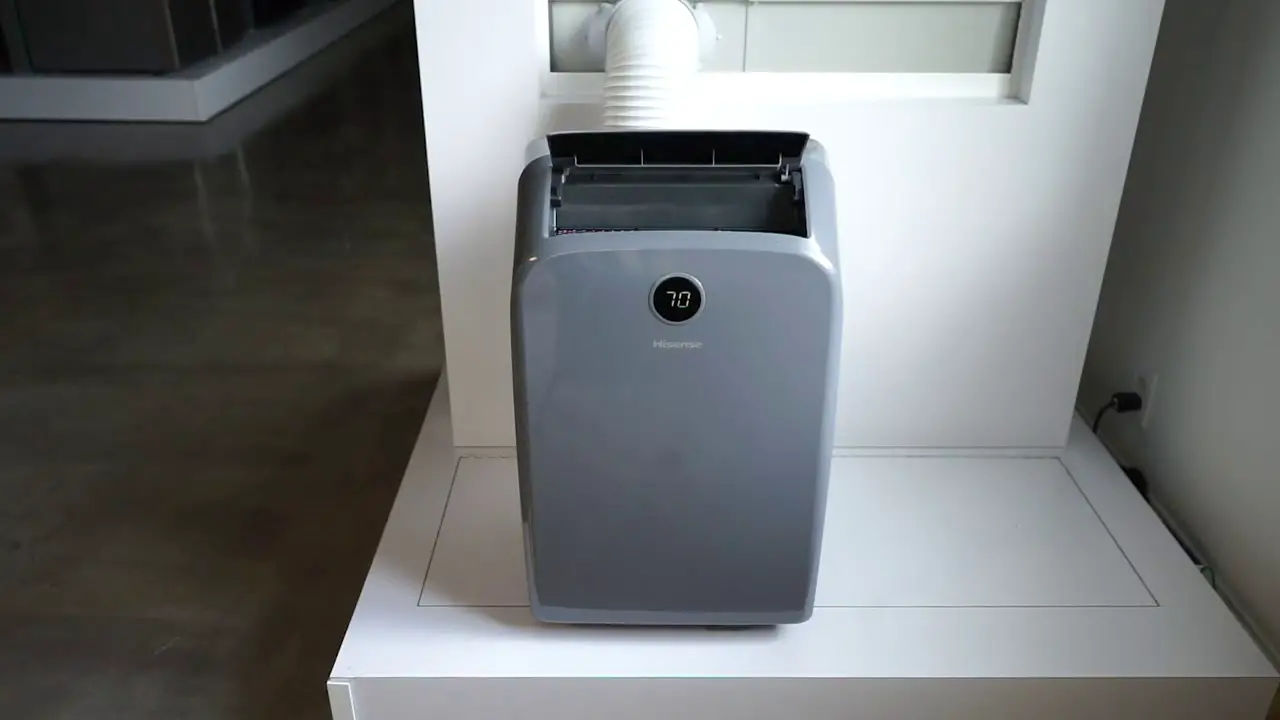The number on an electric stove for simmering is typically 2 or 3. The lower numbers indicate lower heat settings, ideal for simmering.
If you’ve ever tried to cook a delicate dish that needs to be simmered at a low and steady heat, you know the struggle of finding the perfect setting on an electric stove. Many people often wonder which number corresponds to the simmer setting on their electric stoves.
We will delve into the specifics of what number on an electric stove is considered the simmer setting, allowing you to cook your dishes to perfection without the stress of guessing the right heat level. Understanding the simmer setting on your electric stove will help you achieve optimal cooking results, whether you’re making soups, sauces, or stews. Let’s explore the ideal heat setting for simmering on an electric stove to enhance your cooking experience.
Table of Contents
ToggleUnderstanding Electric Stove Settings
The Different Settings On An Electric Stove
Electric stoves come equipped with a variety of cooking settings aimed at providing precise control over the heat levels. The number settings typically range from 1 to 9 or sometimes 10, with each number corresponding to a specific temperature range. These settings allow for a wide range of cooking techniques, from high-heat searing to gentle simmering.
How The Settings Correlate With Temperature Range
The number settings on an electric stove directly correlate to the temperature range, with the low numbers indicating lower heat levels and the higher numbers representing higher heat. For instance, the lowest number setting, usually 1 or L, generates the least amount of heat, while the highest setting, such as 9 or 10, produces the maximum heat output. Understanding this correlation is essential for achieving the desired cooking results.
Simmer Setting Versus Other Cooking Settings
When it comes to simmering, the simmer setting on an electric stove typically falls within the low to medium range, usually around 2 to 4. This setting is ideal for gently cooking delicate foods, slowly braising meats, and infusing flavors into stews. Unlike the higher settings designed for rapid boiling or searing, the simmer setting allows for controlled and gradual heat application, preventing food from boiling over or burning.
Identifying The Simmer Setting
Visual Indicators On The Stove Knobs
Many electric stoves have visual indicators on the knobs to denote the heat level. These indicators may include words such as “simmer,” “low,” or specific numbers representing different heat settings. Knobs may also have a visual cue like a small flame symbol or a shaded area to indicate the simmer setting.
Common Number Settings Associated With Simmer
Electric stoves typically have a range of numbers or heat settings to control the temperature. The common number settings associated with simmer are usually between 1 and 3, with 2 being the most commonly used for simmering. However, different stove models might have variations in the ideal simmer number.
Factors Influencing The Simmer Number On Various Stoves
Several factors can influence the simmer number on different electric stoves, including the stove’s brand, model, and age, as well as the type of cookware being used. Additionally, the type of food being prepared and the desired simmer intensity can also impact the ideal number setting for simmering.
What Number On An Electric Stove Is Simmer
The simmer setting on an electric stove typically aligns with the number 2 or 3. This low heat setting is ideal for gently cooking delicate foods or reducing sauces without boiling. Simmering allows flavors to meld and develop slowly, resulting in richer and more complex dishes.
The General Range For Simmering On Electric Stoves
Simmering is an essential cooking technique that requires maintaining a low, steady heat to gently cook food. On an electric stove, the simmer setting typically falls within the range of 2 to 4 on the dial. This allows for precise control of the temperature to prevent boiling or overheating the dish.
Variability Between Different Electric Stove Models
It’s important to note that the simmer setting can vary between different electric stove models. While the general range is 2 to 4, some stoves may have a wider or narrower range for simmering. Manufacturers may also label the simmer setting differently, such as using low or medium-low instead of specific numbers. Therefore, it’s advisable to refer to the stove’s manual for the exact simmer setting and to familiarize yourself with the specific controls of your appliance.
How To Find The Exact Simmer Number For Your Stove
To determine the precise simmer number for your electric stove, follow these steps:
- Refer to the stove’s manual: Check the manual or user guide that came with your electric stove. Look for the section that details the different heat settings and their corresponding numbers or labels. This will provide a clear indication of the specific number for the simmer setting on your stove.
- Experiment with the dials: If you are unable to find the simmer setting in the manual, conduct a simple experiment. Start with the lowest setting on the dial and gradually increase the heat while monitoring the temperature of the food. Once you reach a gentle, steady simmer without boiling, take note of the number displayed on the dial. This will help you identify the exact simmer number for your specific stove model.
Perfecting Your Simmer Technique
Simmering is a crucial technique in achieving perfect culinary creations. The ideal simmer is gentle and consistent, and mastering this technique can elevate your dishes to the next level. Below, we’ll explore some key tips for maintaining a consistent simmer, adjusting the simmer setting on different dishes, and the importance of monitoring and adjusting the heat.
Tips To Maintain A Consistent Simmer
Consistency is key when it comes to simmering. Follow these tips to maintain a consistent simmer:
- Use a heavy-bottomed pot to distribute heat evenly.
- Avoid rapid boiling, as this can lead to overcooking or toughening of ingredients.
- Monitor the heat and adjust as needed to keep the simmer steady.
- Cover the pot partially to control the evaporation rate and maintain the simmer.
Adjusting The Simmer Setting On Different Dishes
Not all dishes require the same level of simmer. Consider the following guidelines when adjusting the simmer setting:
| Dish | Ideal Simmer Setting |
|---|---|
| Soups and Stocks | Low to medium-low heat for a gentle simmer. |
| Sauces and Gravies | Medium-low to medium heat to thicken without scorching. |
| Stews and Braises | Low heat for a slow, even simmer to tenderize tough cuts of meat. |
The Importance Of Monitoring And Adjusting The Heat
Consistent monitoring of the simmering process is essential for achieving perfect results. Be mindful of the following:
- Taste and adjust: Taste the dish regularly and adjust the seasoning as needed during the simmering process.
- Ongoing adjustments: Be prepared to make ongoing heat adjustments to maintain the simmer, especially when cooking for an extended period.
- Avoid distractions: Avoid leaving the pot unattended to ensure the simmer remains consistent.
Troubleshooting Simmering Issues
When cooking on an electric stove, achieving the perfect simmer can sometimes be a challenge. Understanding the setting on your stove that corresponds to a simmer is crucial for achieving optimal results. In this section, we’ll delve into common problems encountered while simmering, how to solve heat distribution and temperature stability issues, and when to adjust the setting away from the standard simmer number.
Common Problems Encountered While Simmering
Simmering dishes require low, steady heat to prevent burning or overcooking. Common issues encountered while simmering include uneven heat distribution, inconsistent temperature, and difficulty maintaining a steady simmer.
Solving Heat Distribution And Temperature Stability
To address heat distribution and temperature stability issues while simmering, consider the following:
- Use a heavy-bottomed pan to distribute heat evenly.
- Adjust the position of the pan on the burner to ensure even heat distribution.
- Opt for a simmer plate or heat diffuser to maintain a steady, low heat.
When To Adjust The Setting Away From The Standard Simmer Number
While the standard simmer setting on an electric stove is typically around 200 degrees Fahrenheit, it may be necessary to adjust the setting based on the specific dish or the stove’s performance. Keep in mind that the ideal simmer setting may vary depending on the recipe and the cookware used.

Credit: myfire.place
Frequently Asked Questions For What Number On An Electric Stove Is Simmer
What Number On An Electric Stove Is Ideal For Simmering?
For most electric stoves, the ideal simmering setting is around #2 or #3. This temperature allows for gentle cooking without boiling or scorching the food.
How Do I Achieve A Simmer On An Electric Stove?
To achieve a simmer on an electric stove, set the burner to a low heat level, typically between #2 and #3. This will maintain a low, steady temperature perfect for simmering soups, sauces, and delicate foods.
What Are The Characteristics Of A Simmer Burner On An Electric Stove?
A simmer burner on an electric stove is designed to maintain a low, constant heat. It is ideal for gently cooking delicate foods or keeping dishes warm without boiling or burning.
Is There A Specific Burner On An Electric Stove For Simmering?
While some electric stoves may have a designated simmer burner, others rely on adjusting the heat setting of a regular burner to achieve the desired simmering temperature, usually around #2 or #3.
Conclusion
Finding the perfect number on an electric stove for simmering can enhance your cooking experience. By carefully adjusting the heat to a low setting, you can achieve the ideal temperature for gentle bubbling. Experimenting with different settings and paying attention to the visual cues will help you master the art of simmering.
Keep exploring and enjoy your cooking journey!











